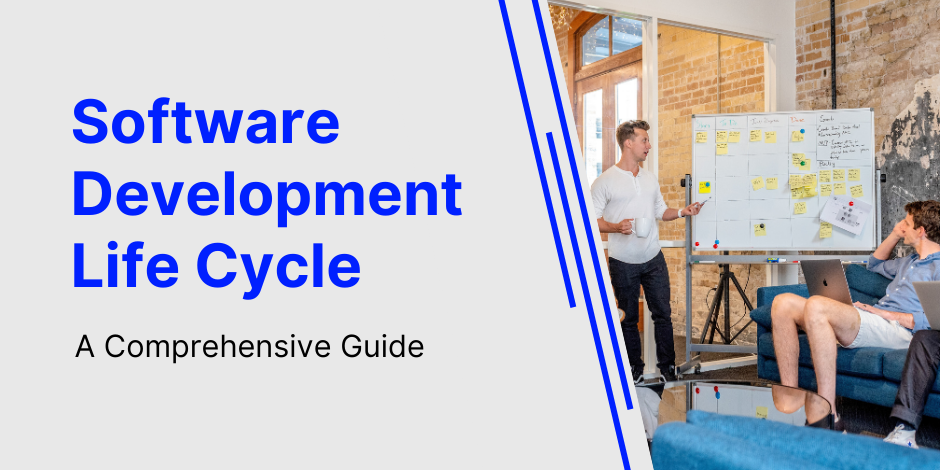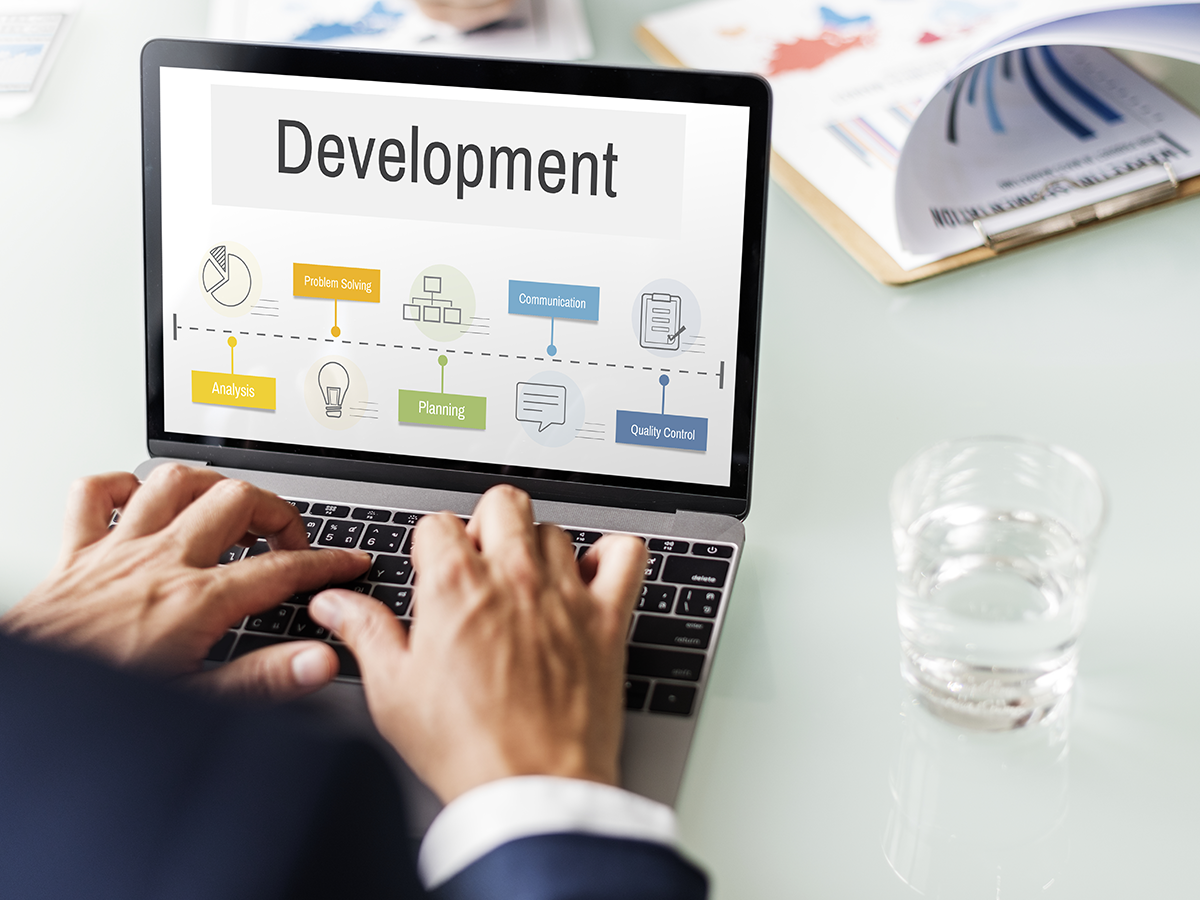Software Development Life Cycle: A Comprehensive Guide

Stay Informed With Our Weekly Newsletter
Receive crucial updates on the ever-evolving landscape of technology and innovation.
Software Development Life Cycle (SDLC) is a process software development teams and project managers use to guide entire projects from the start point to the end while ensuring scalability, quality and cost-effectiveness, among other elements. Depending on the task at hand, developers can employ different engineering frameworks, and each option includes a process with detailed steps.
These steps include planning, designing, developing, testing, deploying and maintaining the solutions. A fixed approach makes it easier to produce higher-quality software solutions and clearly defines how each team member has to contribute. This guide will attempt to understand the software development lifecycle in detail, including some of the most popular frameworks developed teams use. We will also look at all the essential steps that define the life cycle.
What is the software development life cycle?

The software development life cycle helps structure the software development process, making it easier for teams to collaborate and build better solutions. Fixed steps and phases with a separate set of overall objectives and tasks define the cycle. When the end-users requirement and experience are considered from the get-go, the final solution is likely to have higher quality as it is held to specific standards. Maintaining and upgrading the solutions to fit changing needs is also easier as each step has a structure and complete documentation.
The phases include requirement analysis, design and development, implementation, application security testing and maintenance after deployment. It is essential to work through each step to ensure that the final product delivers results.
Besides providing a reduced likelihood of bugs and more efficiency, this repeatable process also helps keep all stakeholders involved in the development cycle. While it is essential to understand the solution you are trying to develop before you dive into project management, most frameworks can be modified to suit the requirements of the target project, whether it is an enterprise-level software system or a basic app.
What are the 7 phases of a software development life cycle?
The software development life cycle has seven SDLC phases: planning, requirements gathering, design, developing, software testing, deploying and maintaining the software solution. SDLC processes are designed to improve efficiency by having fixed objectives, deliverables and processes for each phase. Here is a closer look into each of the phases:
Planning and analysis

The initial plan, objectives list, and primary requirements are established in the first stage. This stage involves creating a detailed project plan that measures the project’s goals, feasibility and scope. With the completed project charter, development teams can move to the next step- requirements gathering.
Requirements document
For the second phase, the development team will need to create a proper layout for all the requirements of the target software solution. This includes documenting processes, identifying potential technical issues and understanding stakeholder requirements.
Once all technical and non-technical software requirements have been detailed, the team will end up with another document called- the requirements document. After this, they can move on to the third and fourth steps- design and development.
After gathering the requirements document, the development starts to create the architecture for their solution. The design process involves everything from the user interface and application programming interface (APIs) to the database and the overall structure. At the end of this stage, the team will have the design document with all the essential details, allowing them to move on to the fourth stage- development.
Next, the team builds the solution using the steps outlined in the requirements and design documents. This step will include writing the code, running the solution, debugging it, and integrating external libraries.
Testing and deployment

For the fifth step in the process, the team starts to test the solution they have developed and ensure that it meets all the requirements in the initial plans. Again, it is essential to work around any bugs highlighted during the tests in this process, whether with application security, performance, or functional testing. When the software passes all these tests, it is ready for the sixth stage – deployment.
The software is finally released to the general public in the sixth stage. This step involves integrating the software with the relevant servers and creating a customer support system so that the feedback can be looked at in detail to fix any issues that come up.
Maintenance and upgrades
For the last and seventh phase of SDLC models, the team will continue to monitor, maintain and improve the deployed solution by looking at the user feedback, fixing bugs, and providing application security updates and other feature enhancements. This phase is possibly the longest-lasting phase. It will be enacted when the software is online to ensure the solution is secure and functional.
What are some popular SDLC models?
Some of the most popular SDLC models include Agile, Crystal, Waterfall, Scrum and DevOps. While they all serve a similar end purpose of creating software solutions, they also come with advantages and disadvantages.
Therefore, it is essential to learn more about each of them before you make an informed decision on the model that will work best for the particular needs of your project and development team.
Let’s take a more detailed look at these popular options:
Agile
The first model on our list is the Agile methodology. Whether building from scratch or modifying an existing solution, this iterative approach involves a flexible and incremental model making it easier for larger teams to collaborate. The method works best for projects with unclear and changing requirements that require quick actions and frequent delivery.
Since there are customer satisfaction checks for each part of the process, the final solution will likely appeal to users, and it is also easier to add additional features on demand. However, there are also certain downsides, like needing specialised resources, requiring more documentation, and sometimes dependency on customer reviews. These examples can affect the development process.
Waterfall model
The waterfall model is sequentially structured, allowing the development process to move to a new phase only after the completion of the prior phase. This method makes the model suitable for projects with set requirements that will likely stay the same while the solution is being developed.
The best part about the model is that it is easy to understand and follow, no matter how large or small the team is. Furthermore, since the deliverables are clearly defined, they are easier to manage, and it is possible to delve into one without worrying about the other.
However, this approach has a few downsides, mainly because it is time-consuming and could add rigidness to the process, as it is only possible to move forward to the next phase when the prior one has been completed.
It is also unrealistic to use this approach with projects with complex and frequently changing needs, as should the requirements change post-development, it could be costly to redo the earlier steps.
Scrum model

Even though it is a subset of the Agile model, Scrum is very popular. This model focuses on short development sprints of 2-4 weeks, each delivering a working product increment. Throughout the process, there is a lot of focus on improving the development process by continuously integrating user feedback.
The Scrum model has several benefits, mainly how it makes complex projects easy by breaking down the process, how it costs less and how it gets a working product out very quickly. Other than its flexibility with changes, this approach also improves productivity and morale for the development team while leaving more end users satisfied.
DevOps model
While the final SDLC model you select will depend on team goals and the complexity of the solution in question, the DevOps model is an excellent approach that attempts to optimise the entire process for everyone involved. It is based on greater communication between the operations and development teams to create continually working solutions. Furthermore, the DevOps model is perfect for solutions because it relies on feedback loops and frequent updates.
The DevOps model allows for greater automation, artificial intelligence integration, innovation and visibility for the entire process, which helps create more stable operating environments with reduced complexity and faster, better product delivery. However, for some teams, the cost of setting up the model could run very high. It can also produce unrealistic goals and unnecessary metrics that complicate the development process.
Conclusion
There is no doubt that Software Development Life Cycle frameworks improve the overall development process. Furthermore, It is only possible to execute most larger-scale projects using one of the SDLC models to some degree. Whether you are a software engineer, project manager or digital entrepreneur dealing with software solutions, it is essential to understand what SDLCs are and how they can be best utilised in your process.
If you are new to the tech industry and you want to learn more about software engineering and building better solutions as a developer, consider your first step as booking a career consultation with one of our career experts today to thoroughly analyse what approach you should take to fulfil your career goals and objectives.




